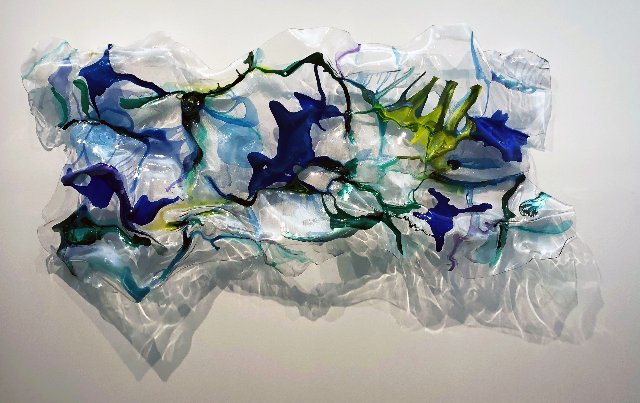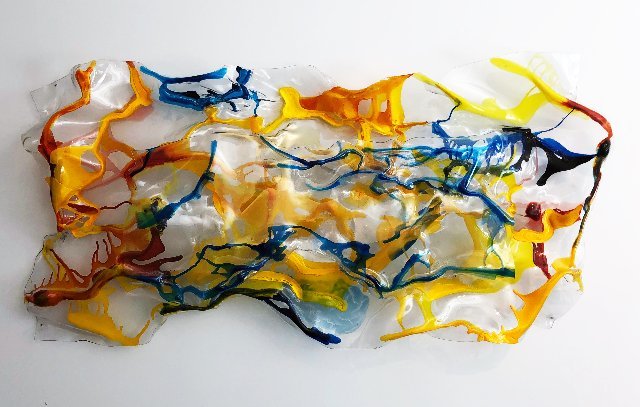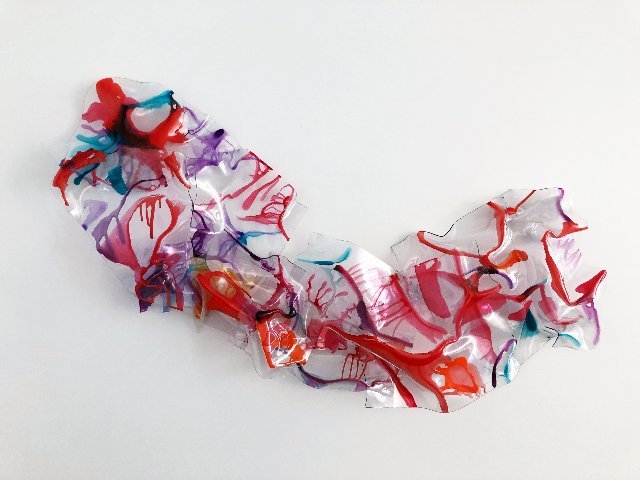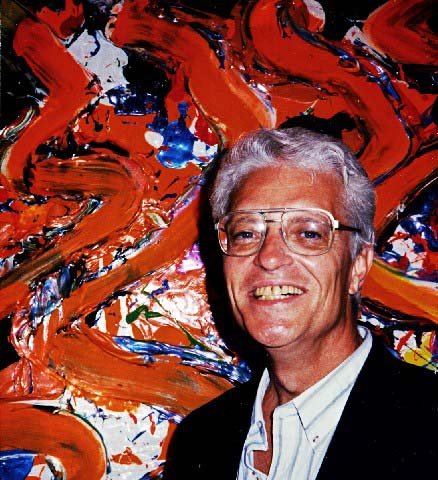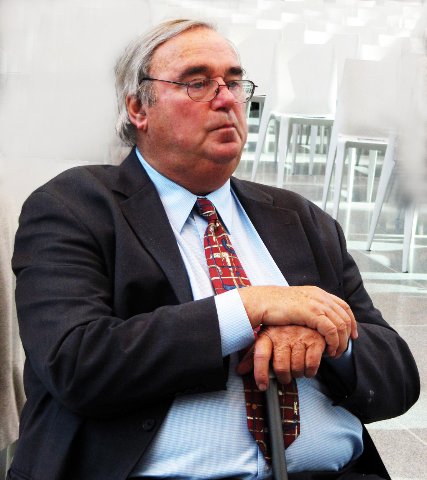Marjorie Minkin Recalls Clement Greenberg and Kenworth Moffett
Mentoring of an Emerging Artist
By: Marjorie Minkin - May 08, 2024
Marjorie Minkin has long been a neighbor and friend in North Adams. I reviewed her 2019 exhibition at Real Eyes Gallery in Adams. She wrote a response to my recent article on the fiasco of how the Museum of Fine Arts bungled the acquisition of Jackson Pollock's "Lavender Mist." It was presented to the acquisition committee by Kenworth Moffett the founding curator of the contemporary program. This article is an expanded response to that coverage. Charles Giuliano
My early intention was to focus on art while attending Skidmore College. After studying Albers theory of color and taking the two design and drawing classes offered, there were no other studio classes available, so I changed my major to philosophy. Following my graduation from Skidmore in 1962, I earned an M.A. in philosophy from Boston University. I also continued drawing from live models and painting in my home studio.
In the late 60’s I was reading articles by Michael Fried and Clement Greenberg in Arts magazine and Art in America. At the time a brilliant psychiatrist who trained at John Hopkins and was interested in art told me that she knew two young artists she was friendly with in Baltimore and spoke of how they spent days at the beach together with their families. They were Morris Louis and Ken Noland. She said that the new contemporary curator at the Boston Museum was a follower of Greenberg’s approach to contemporary art. She further explained that because of Kenworth Moffett’s admiration for Morris Louis’s paintings, Louis’s widow gave his paintings to the museum on the condition that they be exhibited regularly. Louis had told her that Greenberg made his career. Greenberg later told me the same thing! I visited the MFA in the late 1960’s and saw a Morris Louis Unfurled painting for the first time and was inspired by its expression of space and light.
In the early seventies, I enrolled in the School of the Museum of Fine Arts in Boston, now School of the Museum of Fine Arts at Tufts University. Ken Moffett visited my studio during the first Waltham Artists Open Studio event in 1977. The Moody Street Waltham artists had the first open studios in the Boston area based on the LA open studios. In 1979 I was the recipient of a traveling scholarship as a 5th year student from the School of the Museum of Fine Arts. Ken Moffett saw my paintings in the exhibition of Traveling Scholars at the Boston MFA. When he visited my studio during a later Waltham Open Studios event, I told him about my upcoming show in February,1981 at Cutler Stavaridis Gallery in the Fort Point area of Boston. Ken offered to help with the installation of my show. It was my first solo show at the age of 39. The gallery directors and I accepted his offer. Ken hung the show while the gallery owners went into their office. After the show was hung, Ken took me out for lunch and told me he was going to buy one of the paintings for the MFA collection. A nice way to start an art career!
I first met Clement Greenberg after Ken invited me to go to Toronto in the summer of 1981 where he and Greenberg were on a panel discussion at the Toronto Art Fair. I accompanied Greenberg and Moffett on their visit to at least 20 artists’ studios in Toronto. It was the best art education of my life! I also met Karen Wilkin, New York critic, curator, and writer, during that visit to Toronto. She later wrote about my Lexan relief work and curated it in an exhibition Extreme Possibilities at the Painting Center in New York in 2009.
I was very impressed with Friedel Dzubas’s paintings in an exhibition at the Boston MFA in 1975. Dzubas who was teaching at the SMFA in 1981 took his class to see my show. Later he told me about the Triangle Artists Workshop in Pine Plains NY, started by Tony Caro and Roger Loder. It was held at the Mashomack Club in Pine Plains, NY, and the studios were created out of former diary barns on the adjacent farm. I attended the inaugural workshop in 1982. The artists were from the US, Canada, and Great Britain. Hence the name Triangle. It was there that I first met Anthony Caro, British sculptor, who became a lifelong long friend and supporter as he was to so many other artists. Today the Triangle Arts Association provides residencies in NYC for artists from all over the world.
At the Triangle workshop in 1982 I met Greenberg again who was visiting the workshop. I later invited him to visit artists’ studios in the Boston area. I took him to 30 studios in two and a half days. He told at least one artist to continue painting landscapes. He claimed to have preferred landscapes to abstract art although he felt that the latter was the most vital art of that time. Clem told me he was asked to speak at Pollock’s funeral, but refused because he felt Pollock was responsible for the death of a young woman in the car accident that ended Pollock’s life. On one occasion Greenberg invited me to join him for dinner with Charles Harrison, who collaborated with and wrote about the Art and Language movement.
Ken introduced me to artists from New York, Connecticut, Canada, Great Britain and France. When artists came to visit Ken at the Boston MFA, he often brought them to my studio to see my work. Several New England artists and upstate New York artists used my studio to present their work to Ken giving him the opportunity to see it. I benefited as well by seeing what other abstract artists were doing. In 1983 Ken curated the exhibition Abstract Art in New England that consisted of painters and sculptors from MA, CT, VT, RI and two artists then living in NY. The exhibition had its first venue at the Danforth Museum in Framingham, MA. It then traveled to the Stamford Museum in CT, the Art Complex Museum in Duxbury, MA, and Plymouth State College, NH. In 1982 a group of Boston area artists met in each other’s studios to view and discuss their work. Ken attended these meetings and offered his critique of the works.
Lewis Cabot, trustee of the Boston Museum of Fine Arts, was a collector, art consultant and a great admirer of the contemporary art being championed by the critic Clement Greenberg. Cabot was instrumental in the hiring of Kenworth Moffett, a highly respected art history professor at Wellesley College who was allied with Greenberg. What is not generally known is that Lewis Cabot who died in 2019 was a great private supporter of the arts with his generous gifts. He always contributed anonymously. I learned of some of Lewis Cabot’s contributions to the arts including that he was the founder of Storm King. Cabot lent his extensive collection of Sir Anthony Caro sculptures anonymously to museums all over the world. He built a fully equipped sculpture studio on his private estate for artists to make sculptures as his guests, myself being one of them, and offered access to his private library of rare art books and catalogues to art writers while providing them with comfortable accommodations.



